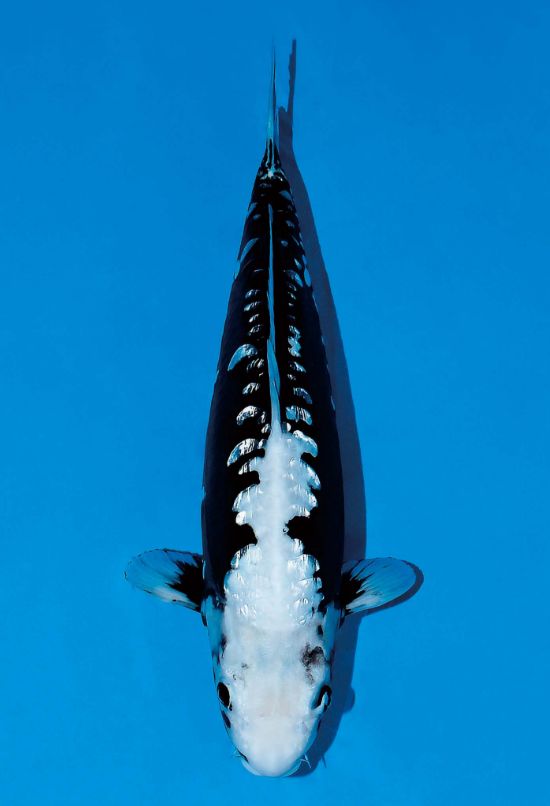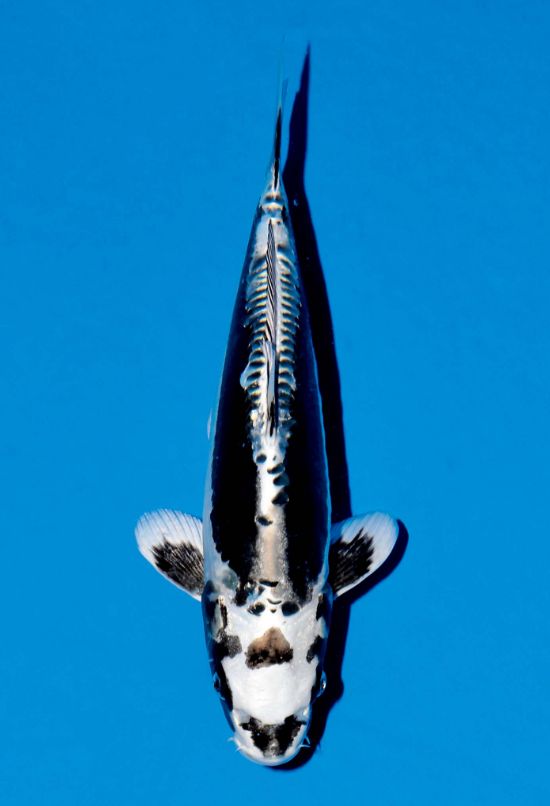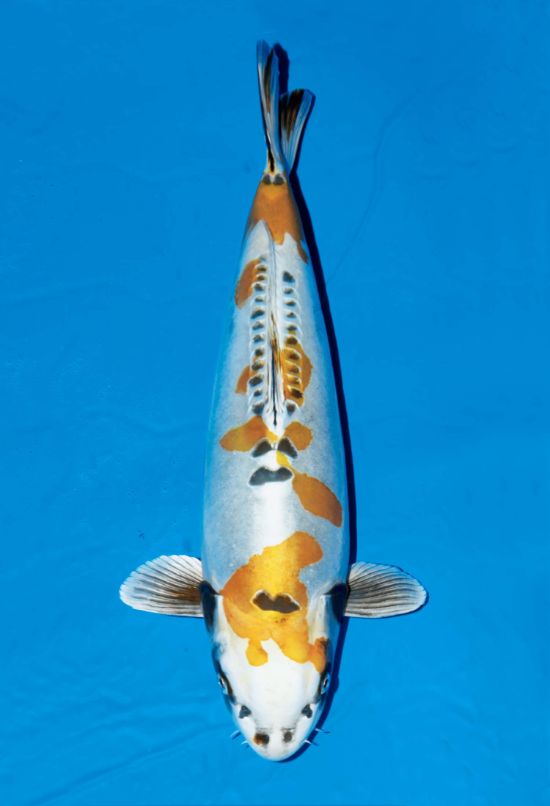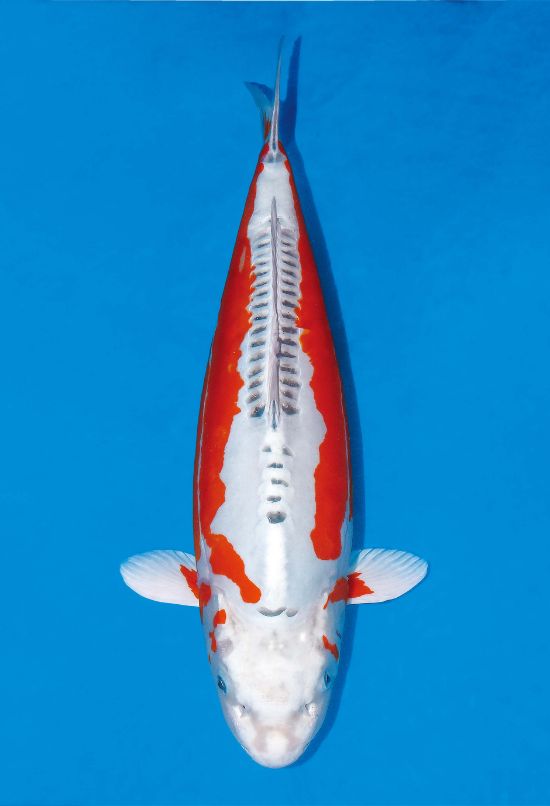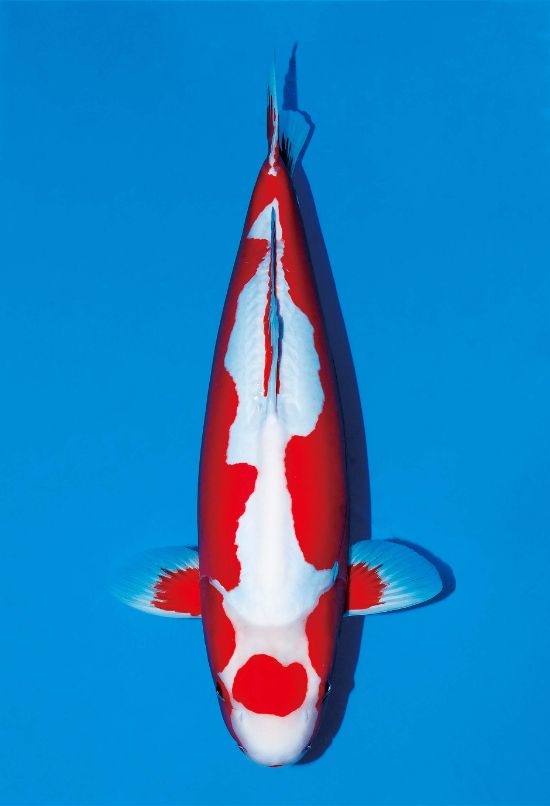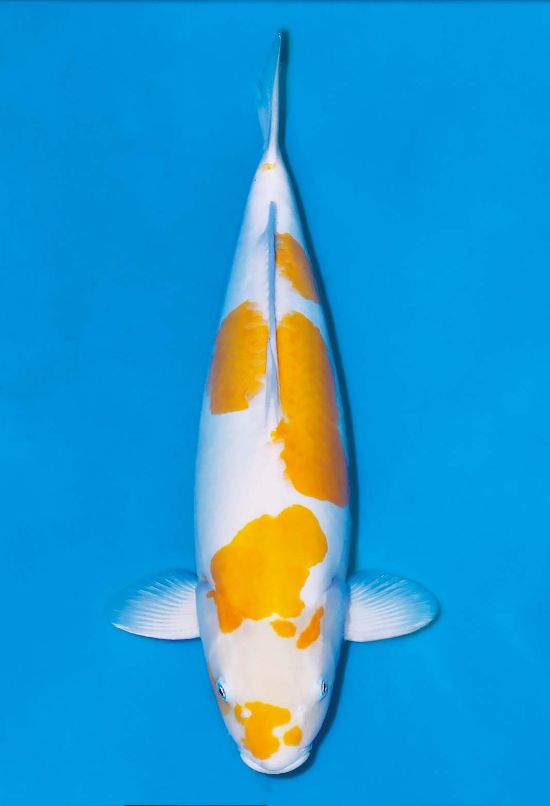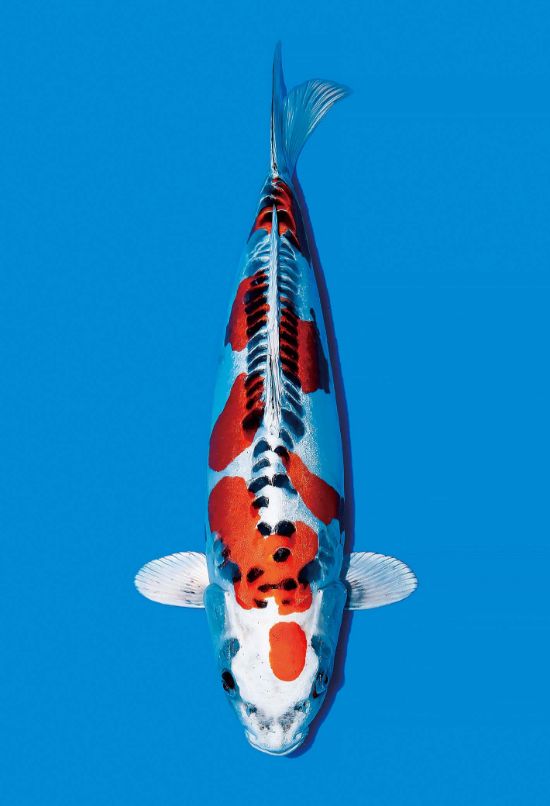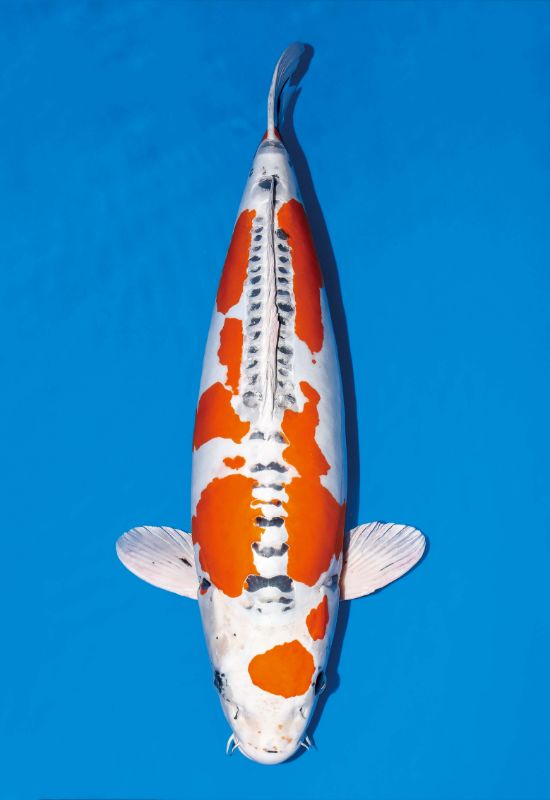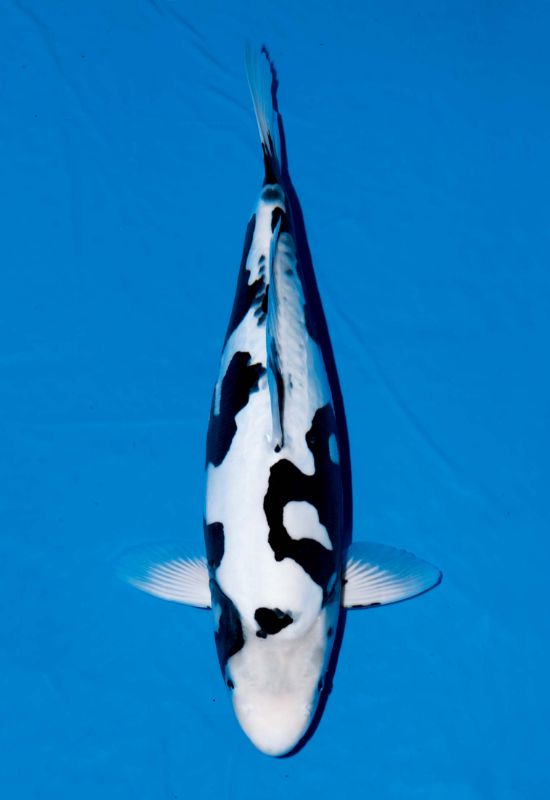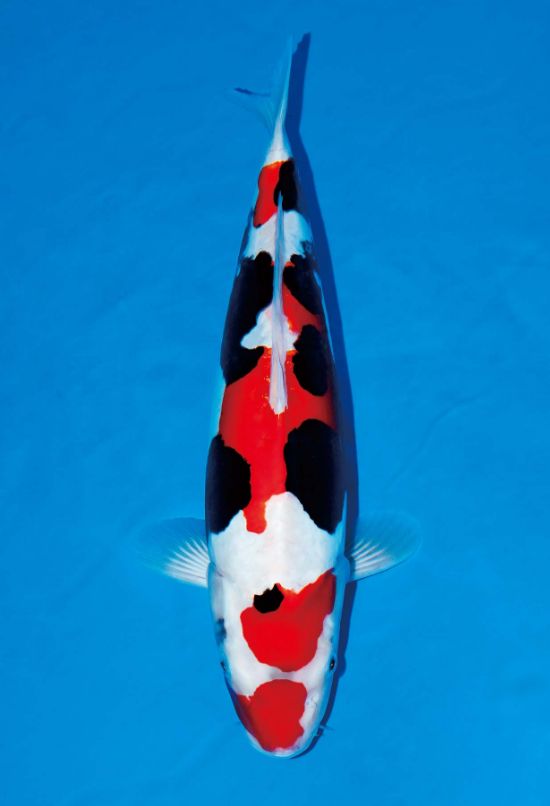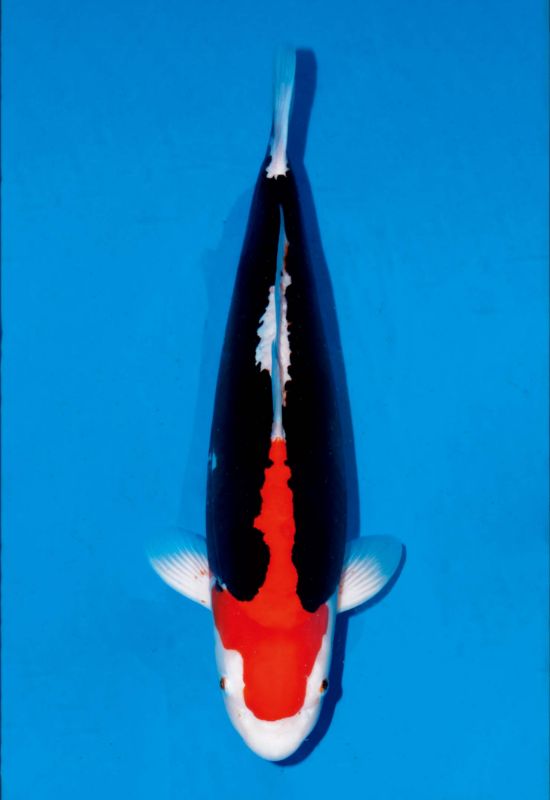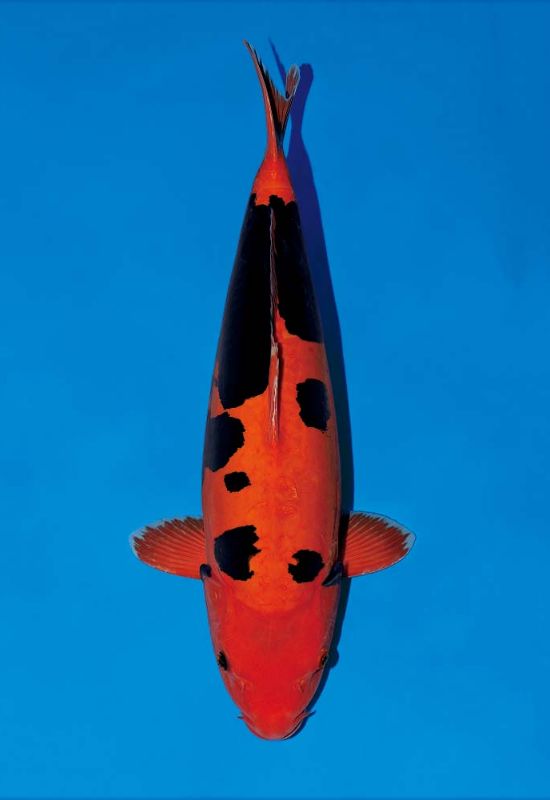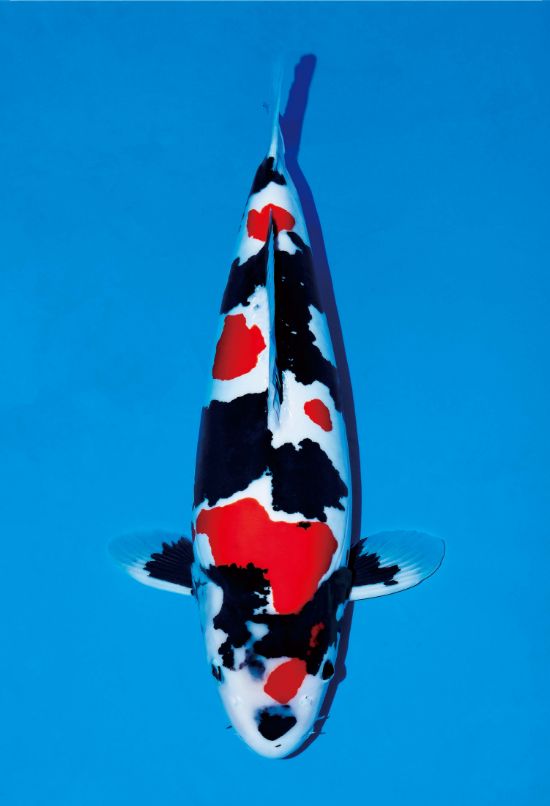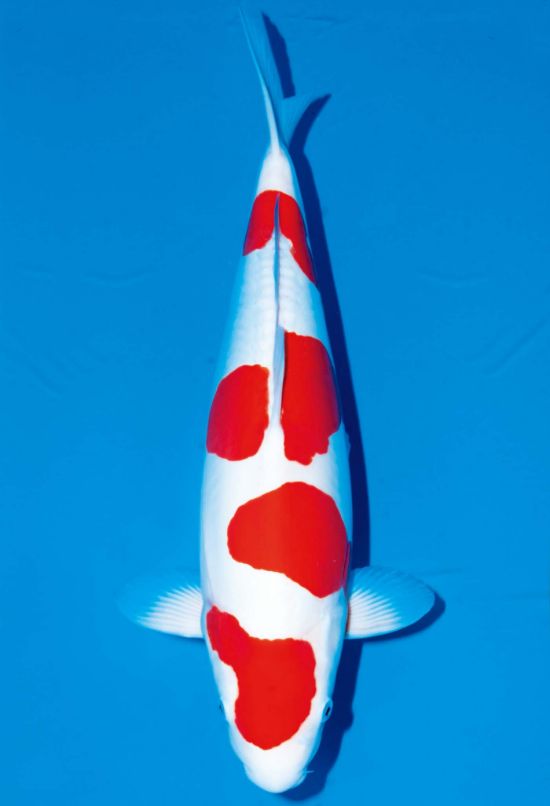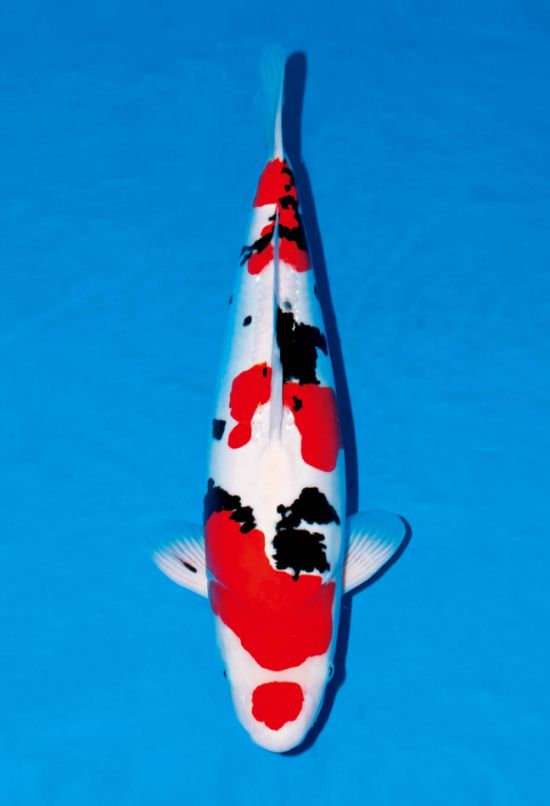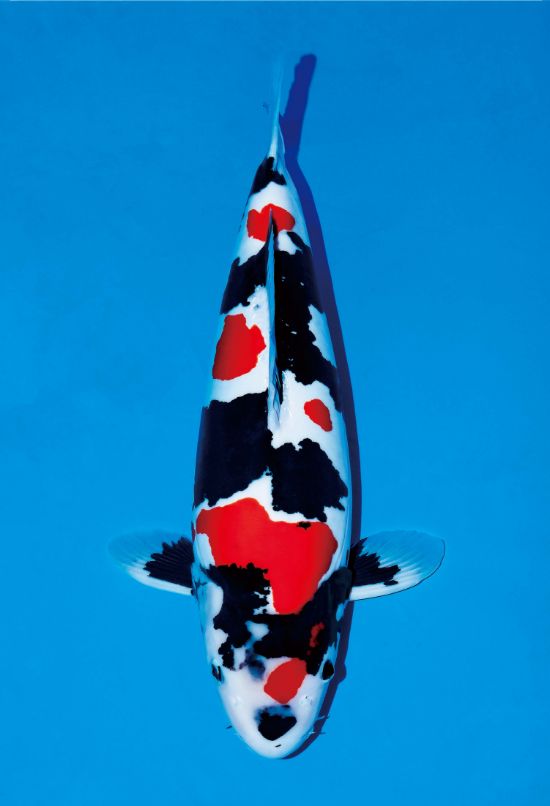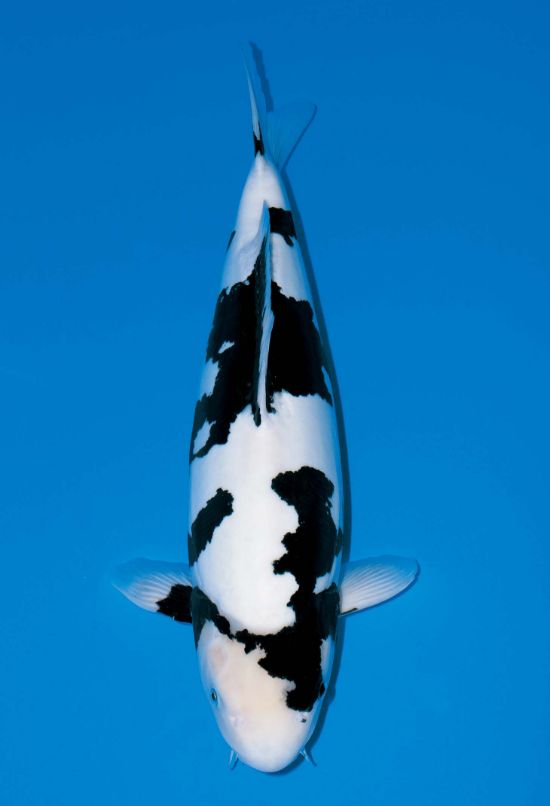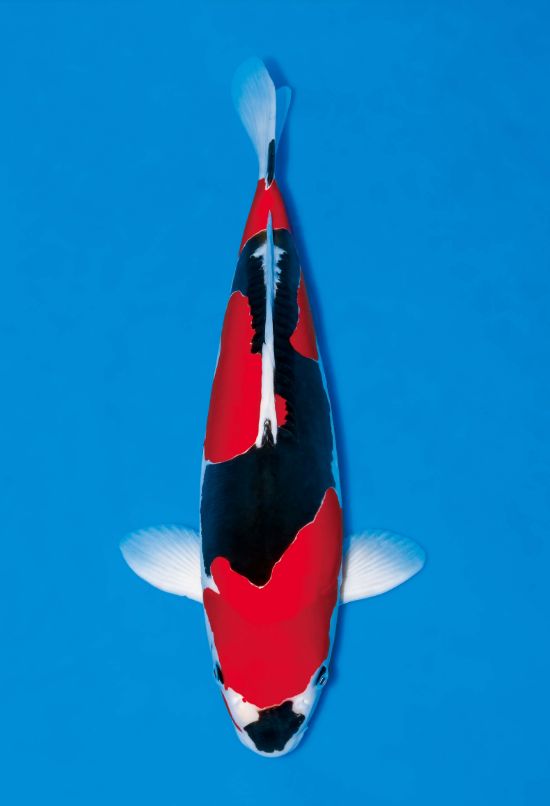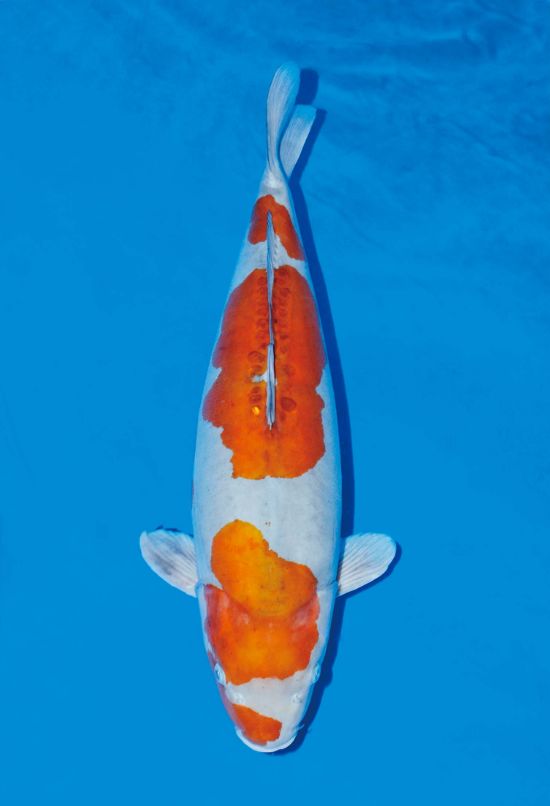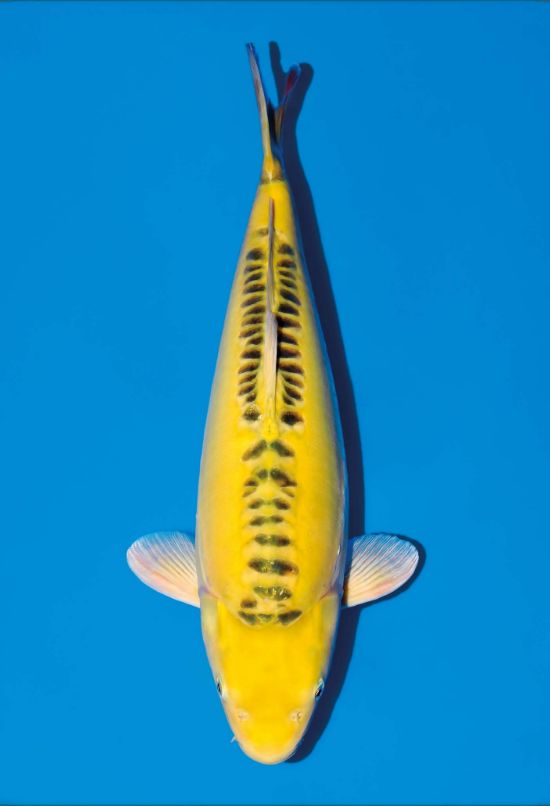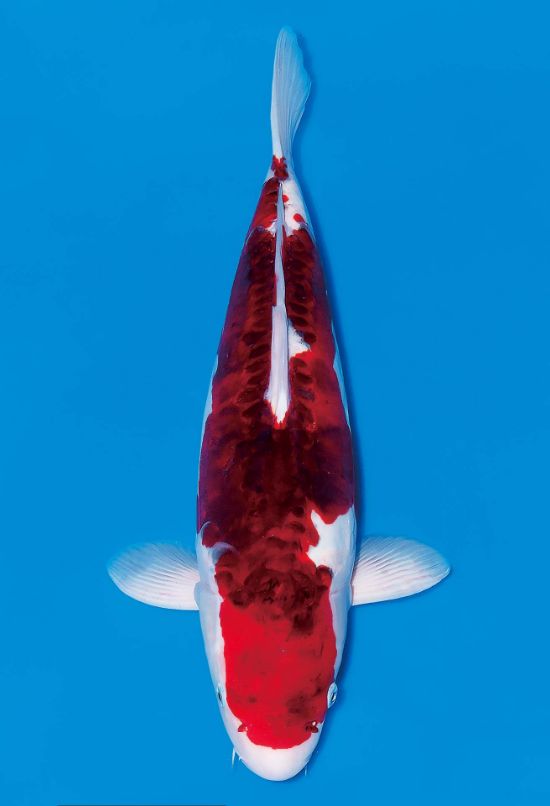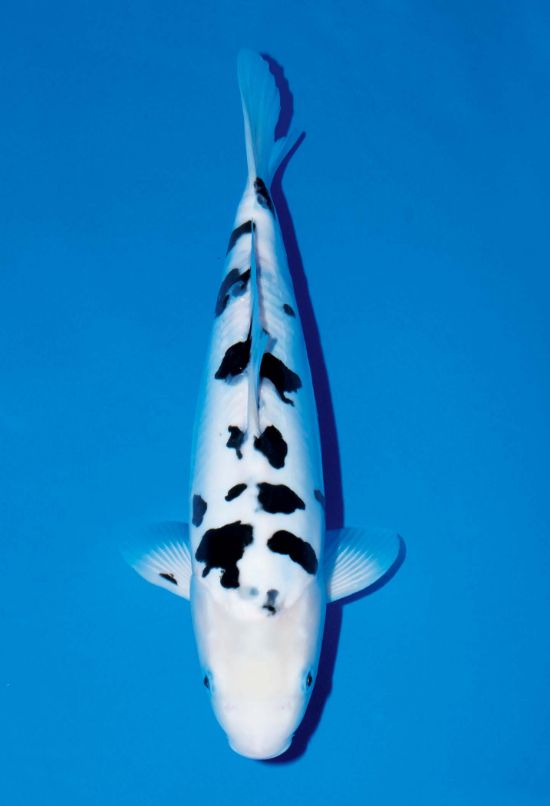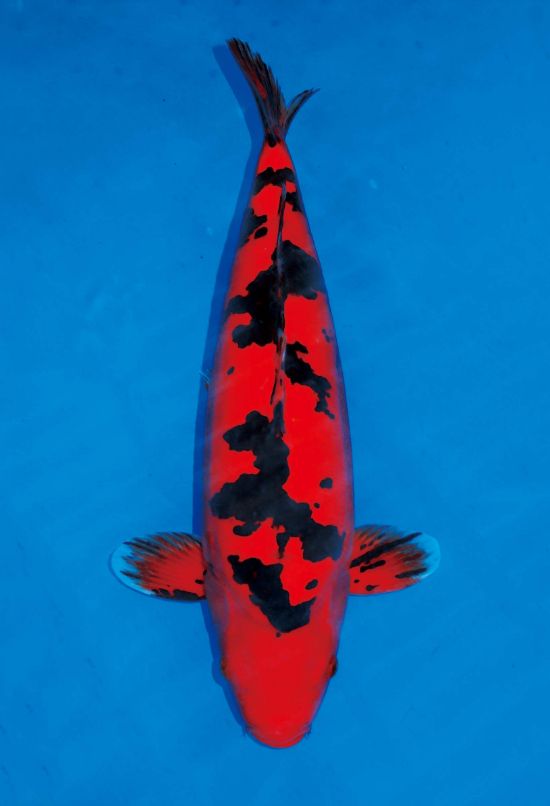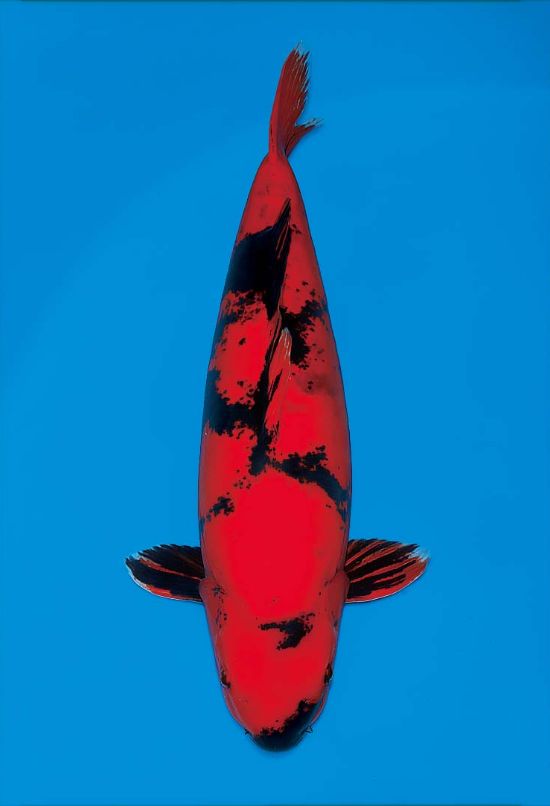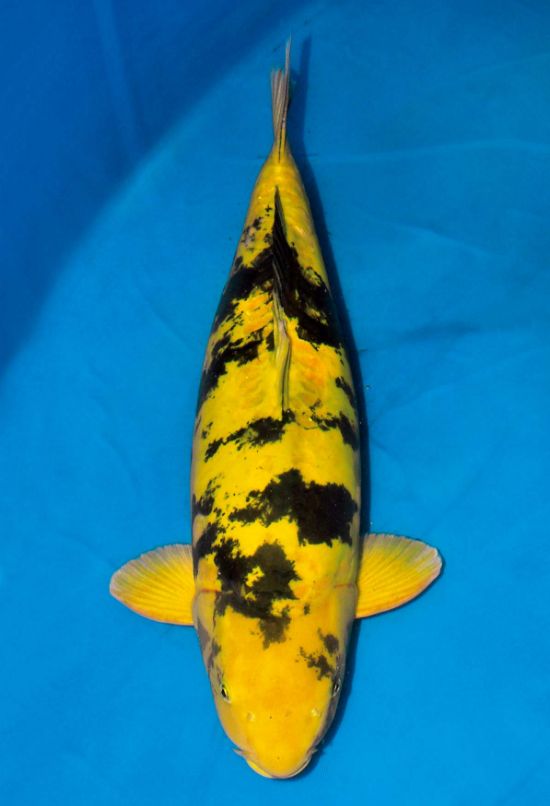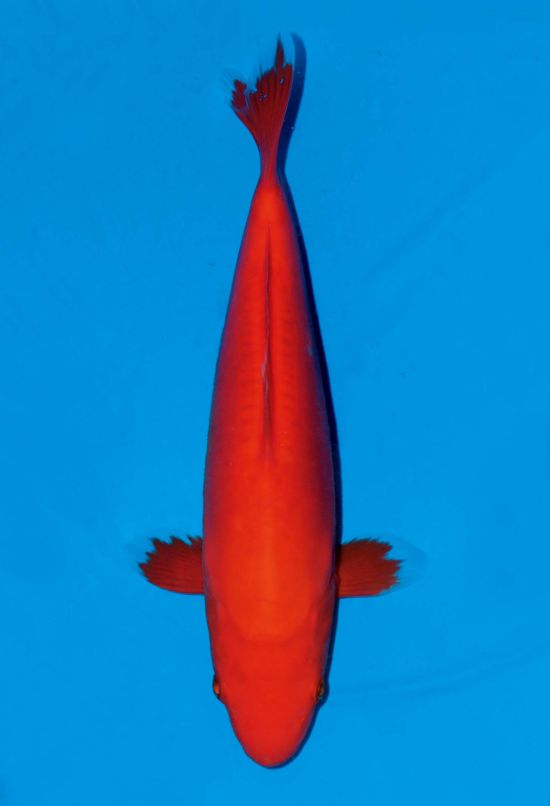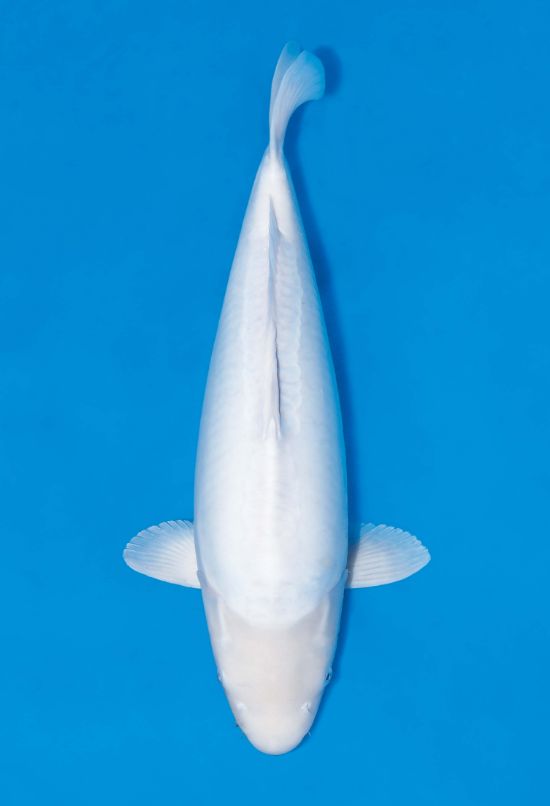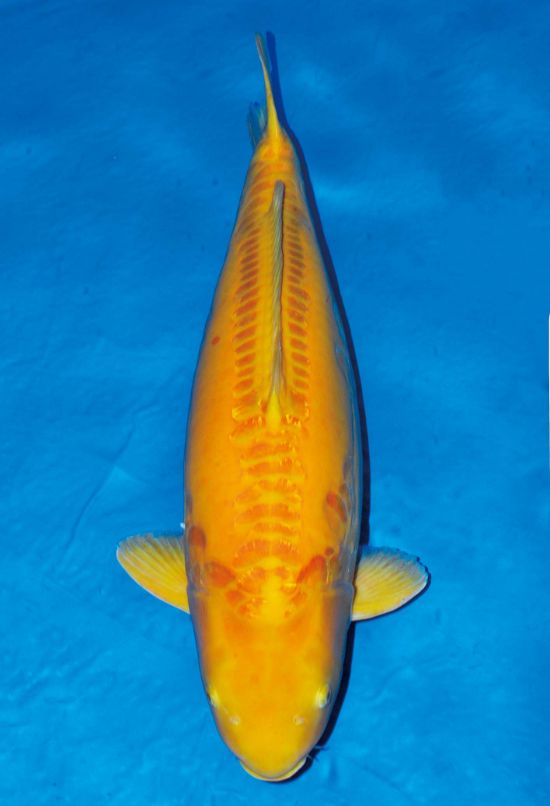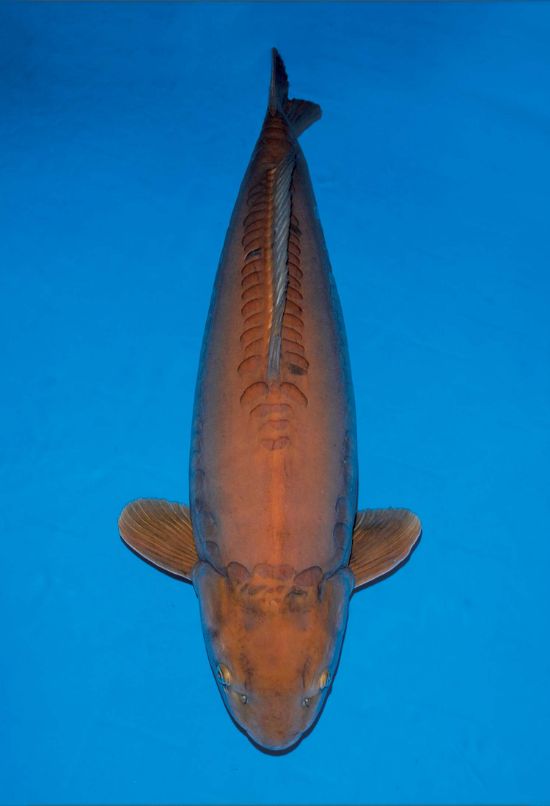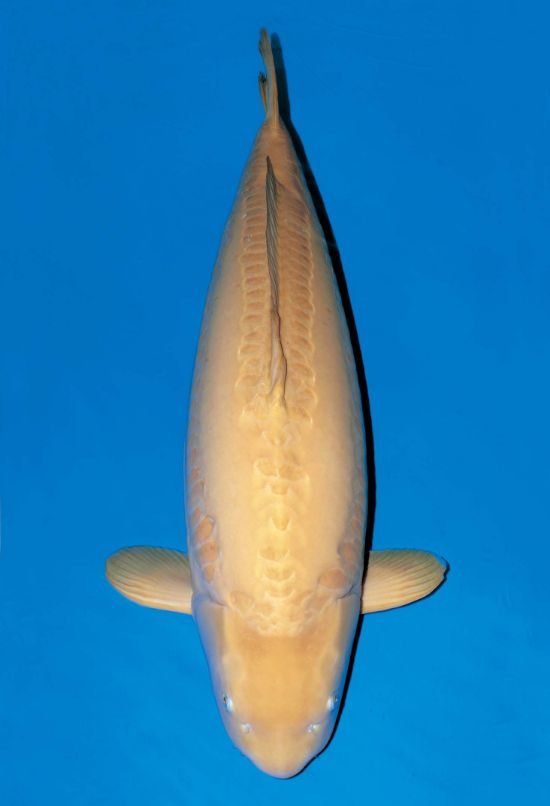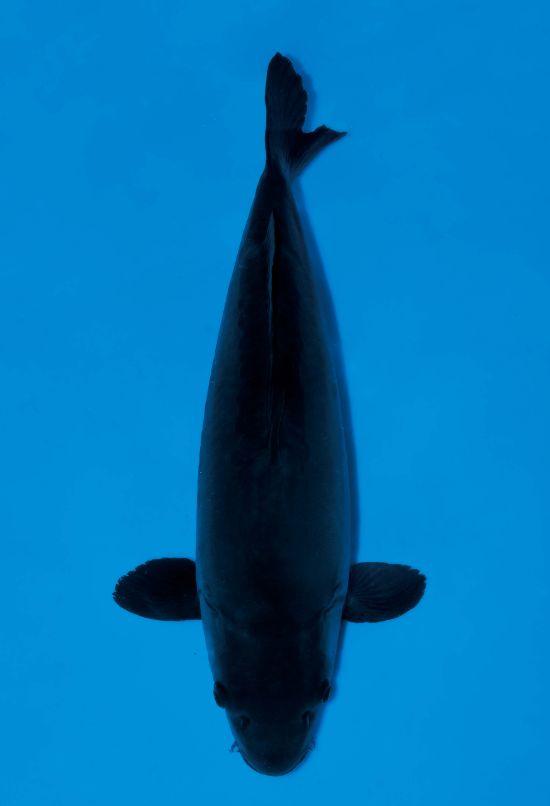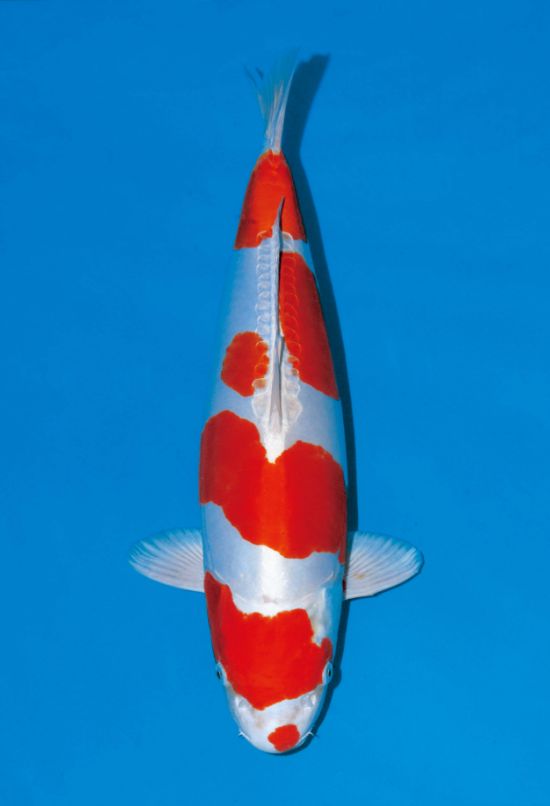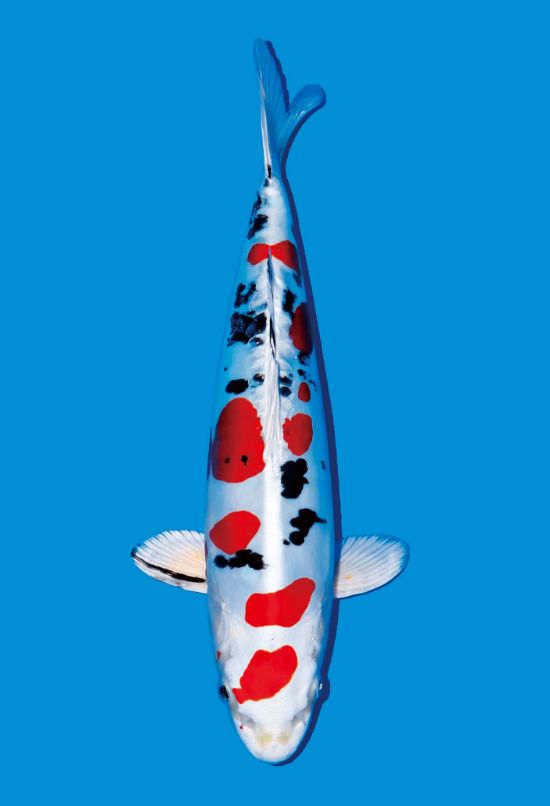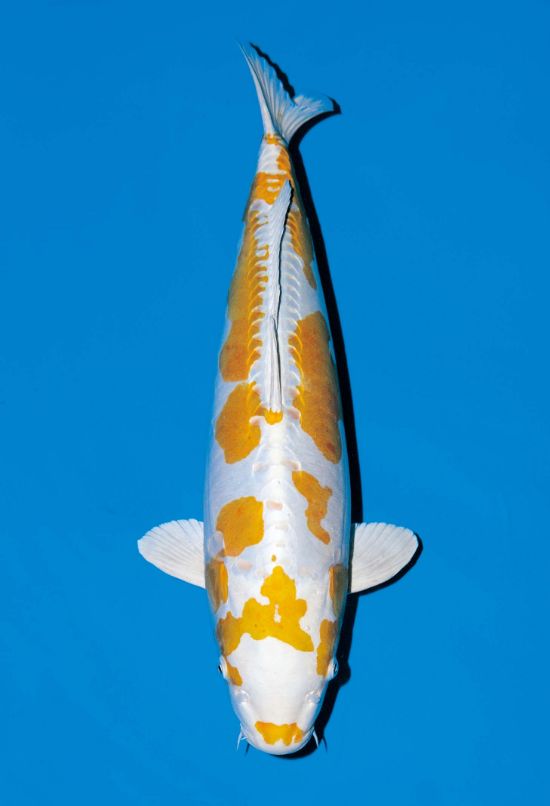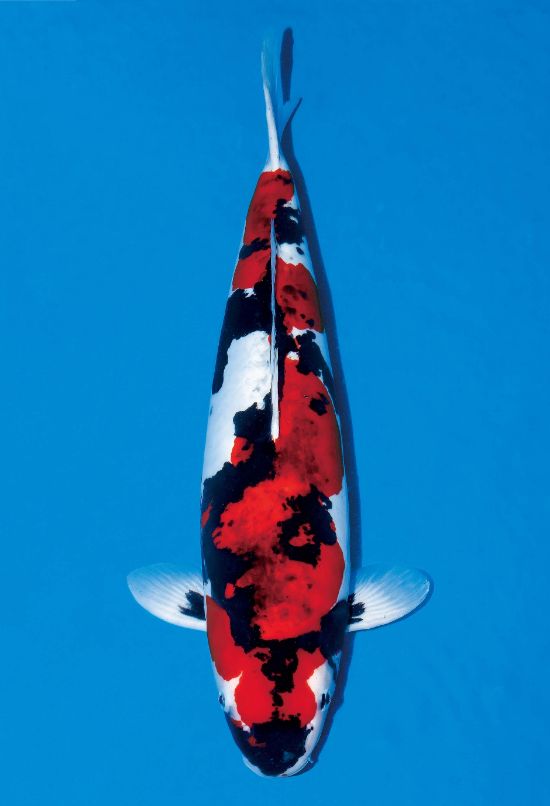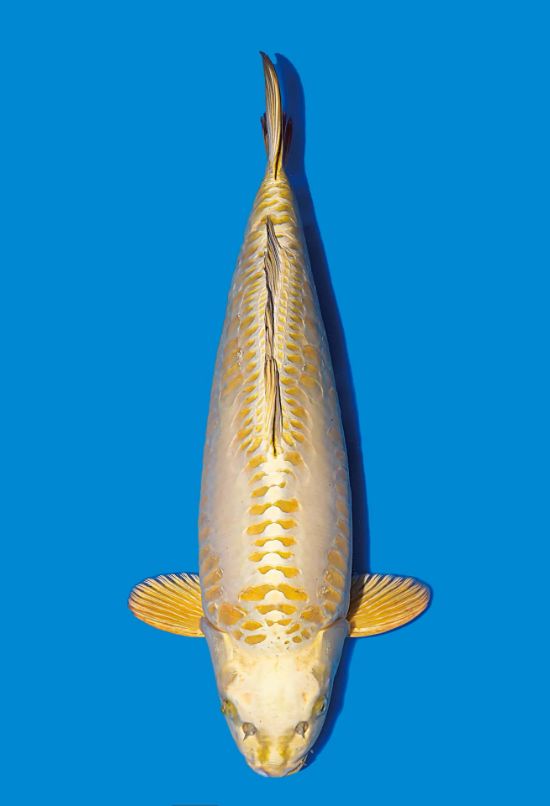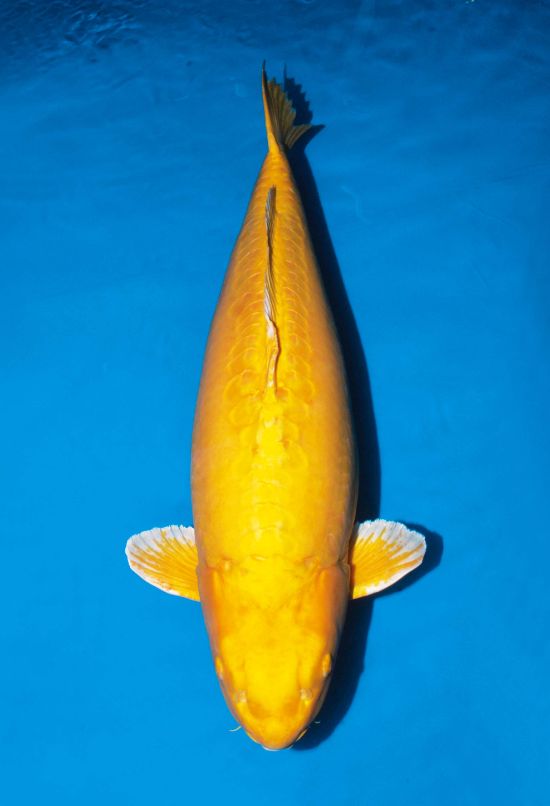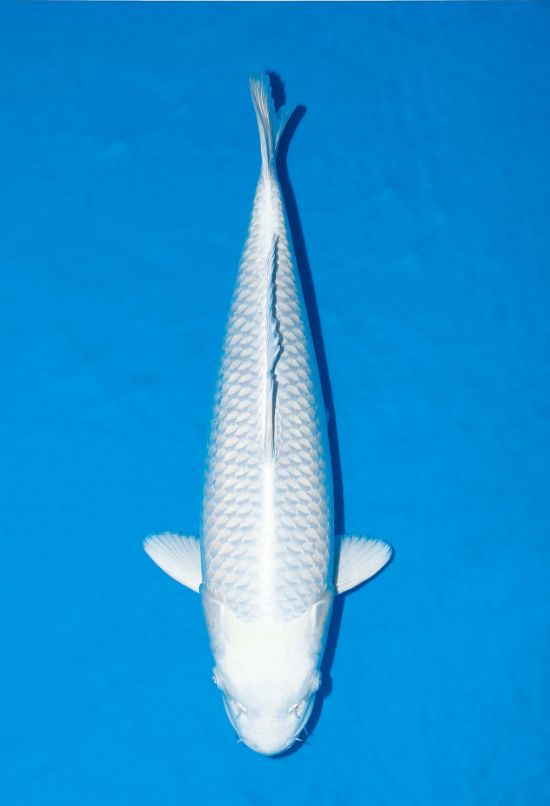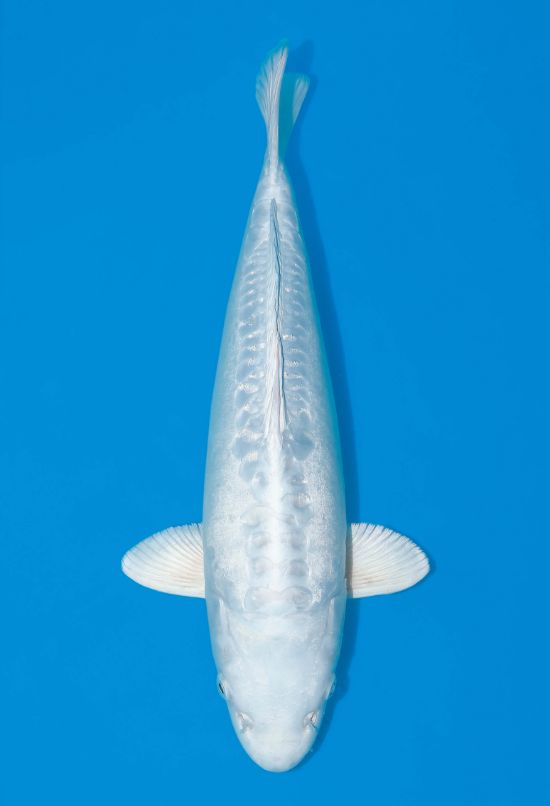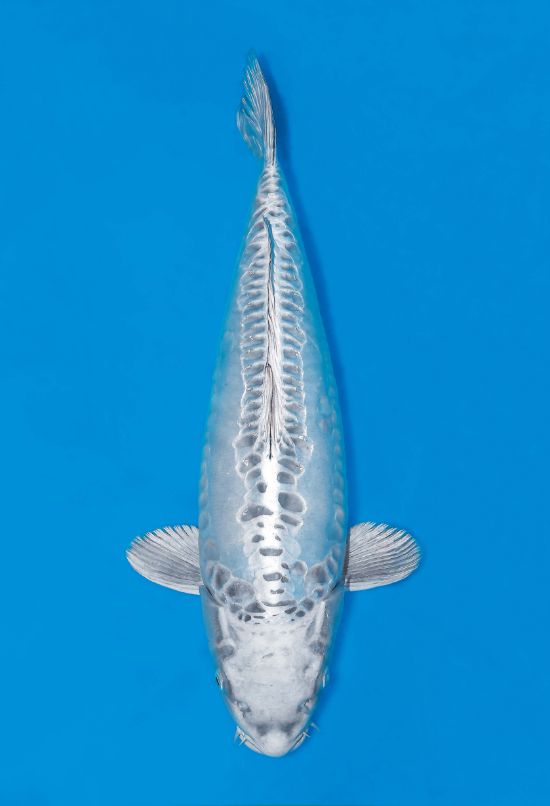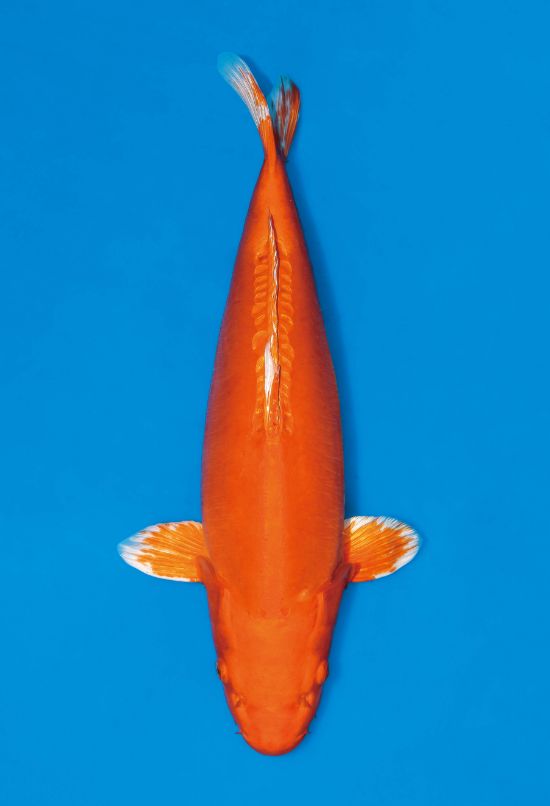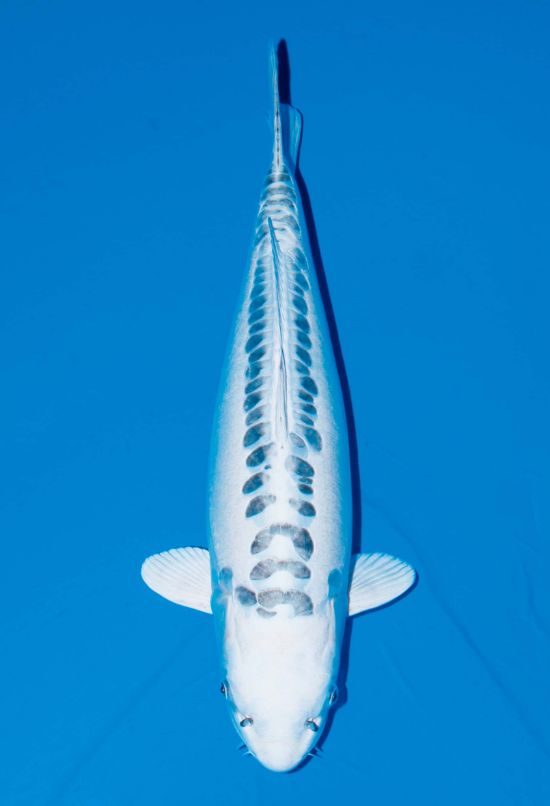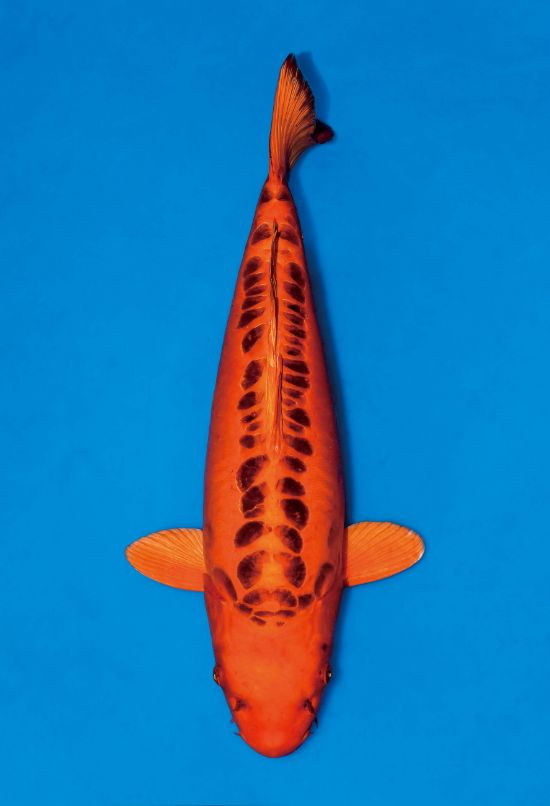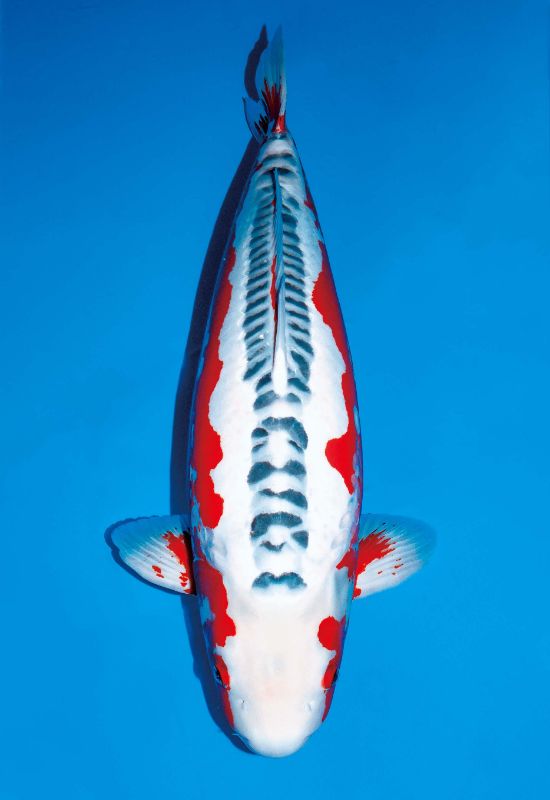Ginrin-kumonryu
Ginrin-kumonryu has shine golden or silver scales, and has the appearance characteristics of Kumonryu.
Metalic-doitsu-ochiba
Metalic-doitsu-ochiba has almost no scales, the skin is exposed, the whole body is shining, and it has the appearance characteristics of Ochiba-shigure. The entire back is shining silver.
Kikokuryu
Kikokuryu has its whole body shines, and those having the appearance characteristics of Kumonryu.
Beni-kikokuryu
Beni-kikokuryu has its whole body shines and scarlet imprints across the body. It has the appearance characteristics of Kikokuryu.
Kin-kikokuryu
Kin-kikokuryu has its whole body shines and golden imprints across the body. It has the appearance characteristics of Kikokuryu.
Kinsui
Kinsui has its whole body shines and the appearance characteristics of Shusui.
Kosui
Kosui has a white body and there are scarlet imprints on the abdomen as a general rule. It has almost no scales on the whole body and the skin is exposed.
Aya-wakaba
Aya-wakaba has almost no scales on the whole body and the skin is exposed. There are yellow imprints across the body, and the scales and the skin on the back are light black.
Kijiro
Kijiro has almost no scales on the whole body and the skin is exposed. There are lemon color imprints across the body. Some individuals has scales on the whole body.
Doitsu-kujaku
Doitsu-kujaku has almost no scales on the whole body and the skin is exposed. It has the appearance characteristics of Kujaku.
Kumonryu
Kumonryu has the characteristic of German carp (Doitsugoi in Japanese) with almost no scales, and is a variety with intense black pattern across the white body. Unlike the utsurizumi found in Showa-sanshoku, it is characterized by a pattern that looks like black clouds are freely rising from the body. It is named Kumonryu from the legend that the dragon becomes a cloud and rises to the sky, and when it has red imprints, it is called Beni-kumonryu.
The ink pattern of this variety is very easy to change, and when the water temperature is high, the ink pattern sinks into the white body, and when the water temperature is low, it gushes out, so it can be said that you can enjoy the change of the pattern.
- JAS No.2010 Kumonryu
- Kumonryu is originally a black backgroud, and the white part increases during the growth process, so that a black cloud-like pattern appears on the whole body. It has the appearance characteristics of Doitsugoi, and Black cloud-like patterns may change in a short period of time due to changes in the environment.
Beni-kumonryu
Beni-kumonryu has the appearance characteristics of Kumonryu, and has red scarlet imprints.
Doitsugoi
Doitsugoi is a variety that was produced by crossbreeding Nishikigoi in Japan with a carp that has almost no scales that was bred for edible purposes in Eastern Europe including Germany. Except for the back and both sides, it has almost no scales and the skin is exposed. There are varieties such as Doitsu-kohaku, Doitsu-taisho-sanshoku, and Doitsu-showa-sanshoku.
Compared to common Nishikigoi, which have scales covering almost the entire body (Wagoi called in Japan), Doitsugoi are characterized by their brighter and more vivid colors. A good Doitsugoi is one that has a clear boundary between the color of the skin and the pattern called Kiwa in Japan.
- JAS No.2011 Doitsugoi
- Doitsugoi has almost no scales on the whole body and the skin is exposed.
Doitsu-kohaku
Doitsu-kohaku has almost no scales on the whole body and the skin is exposed, and has the appearance characteristics of Kohaku.
Doitsu-taisho-sanshoku
Doitsu-taisho-sanshoku has almost no scales on the whole body and the skin is exposed, and has the appearance characteristics of Taisho-sanshoku.
Doitsu-showa-sansyoku
Doitsu-showa-sansyoku has almost no scales on the whole body and the skin is exposed, and has the appearance characteristics of Showa-sanshoku.
Doitsu-shiroutsuri
Doitsu-shiroutsuri has almost no scales on the whole body and the skin is exposed, and has the appearance characteristics of Shiroutsuri.
Doitsu-goshiki
Doitsu-goshiki has almost no scales on the whole body and the skin is exposed, and has the appearance characteristics of Goshiki.
Doitsu-ochiba-shigure
Doitsu-ochiba-shigure has almost no scales on the whole body and the skin is exposed, and has the appearance characteristics of Ochiba-shigure.
Doitsu-midorigoi
Doitsu-midorigoi has almost no scales on the whole body and the skin is exposed, and has the appearance characteristics of Midorigoi.
Doitsu-ai-goromo
Doitsu-ai-goromo has almost no scales on the whole body and the skin is exposed, and has the appearance characteristics of Ai-goromo.
Doitsu-budo-goromo
Doitsu-budo-goromo has almost no scales on the whole body and the skin is exposed, and has the appearance characteristics of Budo-goromo.
Doitsu-shiro-bekko
Doitsu-shiro-bekko has almost no scales on the whole body and the skin is exposed, and has the appearance characteristics of Shiro-bekko.
Doitsu-aka-bekko
Doitsu-aka-bekko has almost no scales on the whole body and the skin is exposed, and has the appearance characteristics of Aka-bekko.
Doitsu-hiutsuri
Doitsu-hiutsuri has almost no scales on the whole body and the skin is exposed, and has the appearance characteristics of Hiutsuri.
Doitsu-kiutsuri
Doitsu-kiutsuri has almost no scales on the whole body and the skin is exposed, and has the appearance characteristics of Kiutsuri.
Doitsu-aka-muji
Doitsu-aka-muji has almost no scales on the whole body and the skin is exposed, and has the appearance characteristics of Aka-muji.
Doitsu-shiro-muji
Doitsu-shiro-muji has almost no scales on the whole body and the skin is exposed, and has the appearance characteristics of Shiro-muji.
Doitsu-kigoi
Doitsu-kigoi has almost no scales on the whole body and the skin is exposed, and has the appearance characteristics of Kigoi.
Doitsu-chagoi
Doitsu-chagoi has almost no scales on the whole body and the skin is exposed, and has the appearance characteristics of Chagoi.
Doitsu-chautsuri
Doitsu-chautsuri has almost no scales on the whole body and the skin is exposed, and has the appearance characteristics of Chautsuri.
Doitsu-karashigoi
Doitsu-karashigoi has almost no scales on the whole body and the skin is exposed, and has the appearance characteristics of Karashigoi.
Doitsu-karasugoi
Doitsu-karasugoi has almost no scales on the whole body and the skin is exposed, and has the appearance characteristics of Karasugoi.
Kikusui
Kikusui has almost no scales on the whole body and the skin is exposed. The whole body shines brightly, and it has the appearance characteristics of Kohaku.
Doitsu-yamatonishiki
Doitsu-yamatonishiki has almost no scales on the whole body, the skin is exposed, the whole body is shining, and it has the appearance characteristics of the Taisho-sanshoku. It is also called Heisei-nishiki in Japan.
Doitsu-hariwake-ogon
Doitsu-hariwake-ogon has almost no scales on the whole body and the skin is exposed. It has the appearance characteristics of Hariwake-ogon.
Doitsu-koromo-showa
Doitsu-koromo-showa has almost no scales on the whole body and the skin is exposed, and has the appearance characteristics of koromo-showa.
Doitsu-tancho-showa
Doitsu-tancho-showa has almost no scales on the whole body and the skin is exposed, and has the appearance characteristics of Tancho-showa.
Doitsu-tancho-kujaku
Doitsu-tancho-kujaku has almost no scales on the whole body and the skin is exposed, and has the appearance characteristics of Tancho-kujaku.
Doitsu-kin-showa
Doitsu-kin-showa has almost no scales on the whole body and the skin is exposed, and has the appearance characteristics of Kin-showa.
Doitsu-gin-shiroutsuri
Doitsu-gin-shiroutsuri has almost no scales on the whole body and the skin is exposed. It has the appearance characteristics of Gin-shiroutsuri.
Doitsu-mukashi-ogon
Doitsu-mukashi-ogon has almost no scales on the whole body and the skin is exposed. It has the appearance characteristics of Mukashi-ogon.
Doitsu-yamabuki-ogon
Doitsu-yamabuki-ogon has almost no scales on the whole body and the skin is exposed. It has the appearance characteristics of Yamabuki-ogon.
Platinum-ogon
Platinum-ogon has no imprints and its whole body shines white or light gray (Platinum-color called in Japan).
Doitsu-platinum-ogon
Doitsu-platinum-ogon has almost no scales on the whole body and the skin is exposed. It has the appearance characteristics of Platinum-ogon.
Doitsu-nezu-ogon
Doitsu-nezu-ogon has almost no scales on the whole body and the skin is exposed. It has the appearance characteristics of Nezu-ogon.
Doitsu-orange-ogon
Doitsu-orange-ogon has almost no scales on the whole body and the skin is exposed. It has the appearance characteristics of Orange-ogon.
Doitsu-gin-matsuba
Doitsu-gin-matsuba has almost no scales on the whole body and the skin is exposed. It has the appearance characteristics of Gin-matsuba.
Mizuho-ogon
Mizuho-ogon has almost no scales on the whole body and the skin shined orange is exposed. Part of scales shines black.
Shusui
Shusui is a variety produced by crossing Asagi with Doitsugoi. It was the first Nishikigoi with the characteristics of Doitsugoi, and was first produced in Tokyo by Mr. Kichigoro Akiyama. It was named Shusui in reference to the one kanji character of the creator's name and the koi's blue body color. Those with a series of round red imprints are called Hana-shusui, while those with the entire body covered in red are called Hijusui.
The blue patterns on the body and the alignment of the large scales (Onigoke called in Japan) on the dorsal side of the body are important for Shusui. The scales should be well aligned and of uniform size, the head should not be dark and cloudy, and the red imprints should be well balanced on the belly, fins, and both cheeks.
- JAS No.2017 Shusui
- Shusui has an “asagidi” pattern on the white part of the body, and has the appearance characteristics of doitsugoi.

